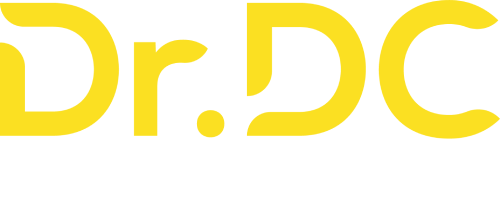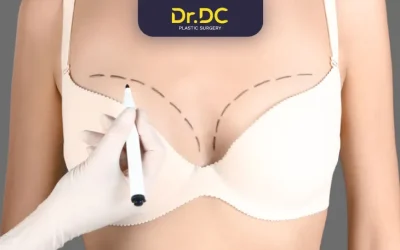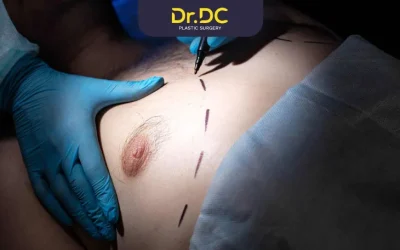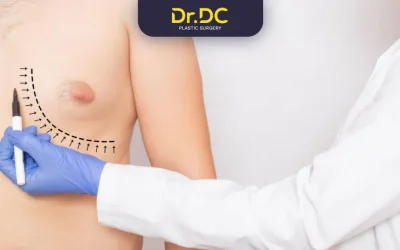Difference between Gynecomastia and Chest Fat
Understanding the difference between gynecomastia & chest fat is crucial for medical professionals, particularly those specialising in fields such as gynecology, obstetrics, laparoscopic surgery, dermatology, and plastic surgery. Differentiating between these conditions not only helps healthcare providers offer accurate diagnoses but also ensures patients receive the most appropriate treatment.
What is Gynecomastia?
Gynecomastia is a condition characterized by the enlargement of breast tissue in males, which can occur at any age. It is often due to an imbalance between the hormones testosterone and estrogen, where either a decrease in testosterone or an increase in estrogen leads to the development of more prominent breast tissue. This condition can be caused by various factors, including hormonal changes during puberty, the use of certain medications, and underlying health conditions such as liver or kidney disease. While gynecomastia is typically not a serious medical issue, it can lead to psychological distress and self-consciousness in those affected.
Causes of Gynecomastia
- Hormonal Imbalance: A decrease in testosterone compared to estrogen levels can lead to this condition.
- Medication Side Effects: Certain medications, including some antibiotics, anti-anxiety drugs, and chemotherapy medications, can contribute to gynecomastia.
- Underlying Health Conditions: Liver disease, kidney failure, or hyperthyroidism may contribute to hormonal imbalances that result in gynecomastia.
Symptoms of Gynecomastia
- Enlarged breast tissue in one or both breasts
- Tenderness or pain in the breast area
- Swollen breast glands
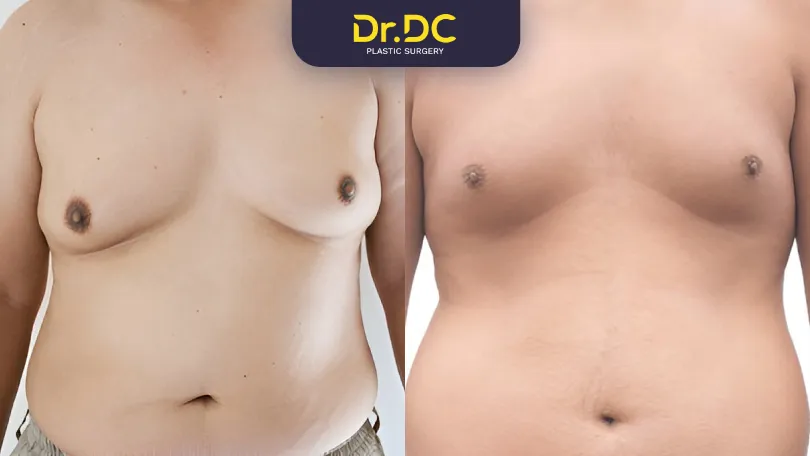
What is Chest Fat?
Chest fat refers to the accumulation of adipose tissue in the pectoral region, which can affect individuals of various ages and body types. Unlike gynecomastia, a condition characterized by the development of breast tissue due to hormonal imbalances, chest fat is generally related to lifestyle factors such as diet and exercise. It can result from consuming high-calorie diets, leading to excess fat storage, or from a lack of physical activity that prevents the burning of calories. Managing chest fat often involves a combination of dietary adjustments and regular strength and cardiovascular exercises to promote a healthier and more toned appearance.
Causes of Chest Fat
- Poor Diet: High-calorie intake and consumption of fat-laden foods can contribute to increased fat deposits in the chest.
- Lack of Exercise: Sedentary lifestyle leads to the accumulation of fat, not only in the chest area but throughout the body.
- Genetic Predisposition: Some individuals may be genetically predisposed to store more fat in the chest area.
Symptoms of Chest Fat
- Soft, fatty tissue in the chest area
- No tenderness or pain
- Symmetrical fat distribution across both breasts
Key Differences between Gynecomastia vs Chest Fat
Physical Appearance and Characteristics
Gynecomastia is often firm and glandular in texture, whereas chest fat is softer and more diffuse. Gynecomastia may also present with pain or tenderness, while chest fat typically does not.
Hormonal Factors vs. Lifestyle Factors
Gynecomastia is primarily caused by hormonal imbalances, while chest fat is more closely linked to lifestyle factors such as diet and physical activity.
How to Diagnose Gynecomastia and Chest Fat?
Medical Examination for Gynecomastia
A plastic surgeon in Pune like Dr Dhruv Chavan can perform a physical examination to differentiate between gynecomastia and chest fat. Tests may include blood tests to check hormone levels and imaging studies such as mammograms or ultrasounds.
Identifying Chest Fat through Lifestyle Assessment
A thorough assessment of the patient’s lifestyle, including diet and exercise habits, can help identify chest fat. Monitoring weight changes and physical examination can further confirm the diagnosis.
Treatment Options for Gynecomastia vs. Chest Fat
Non-Surgical Treatments for Gynecomastia
- Medication: Hormone therapy may help balance testosterone and estrogen levels.
- Lifestyle Changes: Weight loss and exercise can aid in reducing the appearance of gynecomastia in some cases.
Lifestyle Changes to Reduce Chest Fat
- Dietary Modifications: Reducing calorie intake and opting for a balanced diet low in saturated fats.
- Regular Exercise: Incorporating strength training and cardiovascular workouts can help burn excess fat.
When to See a Doctor for Gynecomastia or Chest Fat?
It is advisable to consult a healthcare professional like a plastic surgeon if there are concerns about breast enlargement, especially if it is accompanied by pain or asymmetry. Early consultation can lead to better outcomes and tailored treatments.
We offer a range of cosmetic treatments that help you feel confident again
FAQs on Gynecomastia and Chest Fat
Q1. Can weight loss cure gynecomastia?
Weight loss may reduce the appearance of gynecomastia, but it may not completely resolve the condition since gynecomastia involves glandular tissue rather than just fat.
Q2. Is gynecomastia common during puberty?
Yes, gynecomastia is common during puberty due to hormonal changes and often resolves on its own as boys mature.
Q3. Can chest fat be reduced with exercise alone?
Exercise, coupled with a healthy diet, can significantly reduce chest fat, but spot reduction is not possible. Consistent exercise and dietary changes are essential.
Q4. Are there surgical options for treating gynecomastia?
Yes, surgery such as liposuction or mastectomy may be considered for severe cases of gynecomastia that do not respond to other treatments.
We Offer Range Of Cosmetic Treatments Which helps be confident again
In summary, understanding the distinctions between gynecomastia and chest fat is vital for accurate diagnosis and treatment. Specialists such as a Plastic surgeon in Pune, like Dr Dhruv Chavan, can provide expert guidance and personalised treatment plans to address these conditions effectively.
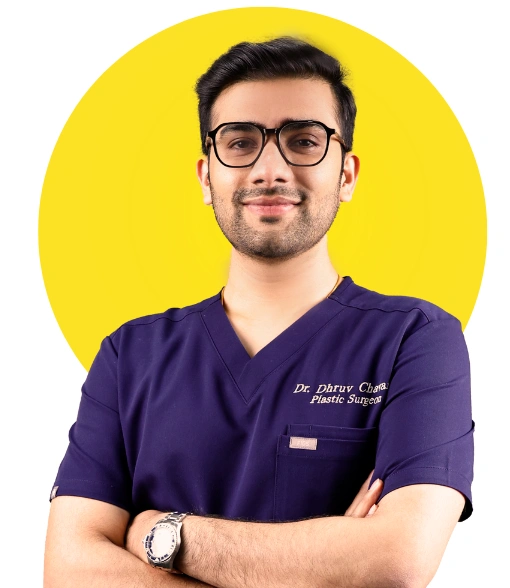
Dr Dhruv Chavan, MBBS, MCh
Board Certified Plastic Surgeon
Book Consultation
Whatsapp
Further Reading
Perfect Candidate for Breast Augmentation : Plastic Surgeon’s Guide
Enhancing the size and shape of a woman’s breasts is the goal
Ultimate Guide to Gynecomastia Treatment
Explore causes, non-surgical options, and expert Guide to gynecomastia treatment at Dr DC Pune. Achieve a confident, masculine chest today.
How to do Gyno Surgery: Step By Step | Dr. Dhruv Chavan
Gynecomastia, commonly referred to as male breast enlargement,
OUR PROCESS
360 Holistic Approach
We take care of everything; before, during, and after your procedure. From consultations to recovery, we focus on precision and care. Result? We deliver a wonderful experience and the best results.
Thorough Evaluation & Consultation
Realistic Goal Setting
Procedure
Planning
Post-Op
Care
We listen, assess, and plan every step to match your goals. Advanced techniques deliver natural results, while dedicated post-op care supports healing and long-term success. Your safety, comfort, and confidence guide every decision, so you always feel informed, supported, and in expert hands.

